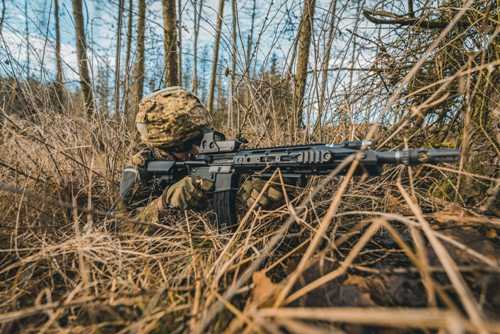We will go deeper into factors affecting the range of a weapon. But first, how much do you know about what a range is?
To put it plainly, the weapon’s range is the distance the bullet can go. If you cannot ensure accuracy in this range, your weapon will not shoot the object accurately.
Three main factors that affect a weapon’s range. Learning about them can somehow help you to avoid inaccuracy. And here they are.

Contents
What Are Factors That Affect A Weapon’s Range?
Three factors include:
- Weapon
- Ammunition
- Environment
Now, let’s learn about them one by one.
Weapon

Undoubtedly, the weapon you use has a significant impact on its range or the distance its bullet travels. In other words, it affects both the muzzle velocity and the bullet accuracy.
What is the muzzle velocity? It is how fast the bullet leaves the barrel. The higher the speed is, the higher the effective range of the weapon will be. Then, the shot tends to go farther. The barrel length and the rifling in the barrel are two parts of a weapon that can affect the effective range. So, how do they do it?
- The barrel length: The longer a barrel is, the higher the muzzle velocity and the more accurate shot that weapon produces. In the same way, the longer barrel can help to increase the weapon’s effective range.
- The rifling in the barrel: The rifled barrel does its role to impart spin on the bullet. An accurate downrange traveling of the spinning bullet can increase the weapon’s effective range, too.
Ammunition

Besides the weapon, another important factor that has a strong impact on the weapon’s effective range is the ammunition. The fact points out that different ammunition grades will never have the same propellant amount.
In terms of gunpowder, propellant plays an essential part found in the cartridge. When burning, it propels the downrange of the bullet. To get a higher muzzle velocity, the ammunition must come with more propellant. Consequently, higher muzzle velocity is one of the key elements to increase the weapon’s effective range.
Not only that, but the ammunition can also affect the range of a weapon in another way which is the bullet’s actual shape. Due to being more aerodynamic, the modern bullets tend to allow the ammunition to travel further. Consequently, the weapon’s effective range increases.
Environment

The third factor of the list is the environment, including altitude, temperature, humidity, and wind. They can get narrowed down to a specific factor called air resistance.
The altitudes and the air resistance
At a higher altitude, the air becomes thinner. So, the bullet meets the lower air resistance and then increases the weapon’s effective range. By contrast, the lower altitude makes the air denser to produce more air resistance, decreasing the weapon’s effective range.
The temperature, humidity and the air resistance
At a low temperature, the bullet can encounter more air resistance thanks to the dense air. Consequently, the effective range of the weapon tends to decrease. When the temperature is high, it is the opposite case.
Similar to temperature, the effect of humidity is the same. The higher humidity making the air dense creates better air resistance. Hence, the effective range decreases and vice versa.
Wind can change the bullet’s direction. The higher air resistance created by this factor can decrease the weapon’s range, especially the longer range. Moreover, when the wind blows, the bullet may travel inaccurately and not hit the target. You should find the best illuminated reticle scope if you want good result in shooting.
Conclusion
That is everything you need to know about factors that affect a weapon’s range. We hope that the information mentioned above is helpful for you. For further knowledge or more questions needed to answer, please drop us a line, and we will be back soon. Thank you!

I am Jerry Gonzalez, and my heart beats for the great outdoors, especially in the breathtaking landscapes of Helena, Montana. Engaging with fellow enthusiasts online and at local hunting clubs has been a rewarding experience, and I find great joy in sharing knowledge and experiences with like-minded individuals. My goal is to empower my fellow hunters with well-informed choices, regardless of their experience level.
